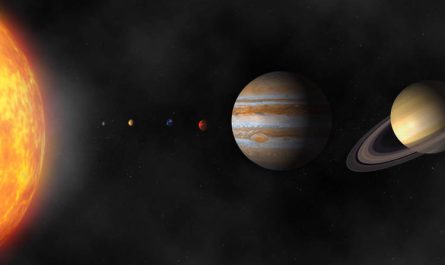Red Shift: The Key to Understanding the Expanding Universe—Are You Ready?
Have you ever looked up at the stars and wondered what secrets the universe is hiding? If so, you’re not alone! One of the most exciting discoveries in astronomy is something called red shift, and it’s like a cosmic detective tool that helps us understand how our universe is expanding. Imagine being able to read the story of galaxies light-years away just by observing their light! In this article, we’ll dive into what red shift is, why it’s so important, and how it might just change everything we think we know about the cosmos. Trust me, you won’t want to miss this journey into the depths of space!
What is Red Shift?
At its core, red shift refers to the change in the wavelength of light emitted by objects in space. Imagine a sound wave from a moving vehicle: as it approaches, the sound pitch is higher, but as it moves away, the pitch lowers. The same concept applies to light!
When an object in space is moving away from us, the light it emits stretches into longer wavelengths, shifting towards the red end of the spectrum. Conversely, if it’s moving towards us, the wavelengths compress and shift towards the blue end, known as blue shift. But today, we’re all about that red shift!
The Science Behind It
To understand why red shift happens, we need to dive a bit into the physics of light. Light travels in waves, and these waves can vary in length. The colors we see correspond to different wavelengths: red light has longer wavelengths, while blue light has shorter ones. When objects in space move away from us, their light waves stretch out, increasing in wavelength and shifting toward red.
This effect is described by the Doppler effect, named after Christian Doppler, an Austrian physicist who proposed this idea in 1842. Just like a car’s siren changes as it moves, the light from celestial objects shifts based on their motion relative to us.
Why Does Red Shift Matter?
A Window to the Universe
So, why should we care about red shift? For one, it serves as a critical tool for astronomers. By analyzing the red shift of light from distant galaxies, scientists can gauge how quickly these galaxies are receding from us. This measurement has profound implications for our understanding of the universe’s expansion.
In the 1920s, Edwin Hubble discovered that galaxies are generally moving away from us, and the farther they are, the faster they’re receding. This observation led to the formulation of Hubble’s Law, which states that the speed at which a galaxy is moving away is directly proportional to its distance from us. The red shift we observe helps quantify this relationship.
Evidence for the Big Bang
One of the most significant implications of red shift is its role in supporting the Big Bang theory. If the universe is expanding, we would expect to see a general red shift in light from distant galaxies. Indeed, this is what we observe! The more distant the galaxy, the more pronounced the red shift, which aligns perfectly with the idea that the universe began from a hot, dense state and has been expanding ever since.
Types of Red Shift
Not all red shifts are created equal. Let’s break down the different types:
1. Cosmological Red Shift
This is the red shift we’ve been discussing so far, linked to the expansion of the universe. As space itself expands, it stretches the light traveling through it, causing galaxies to appear redder the farther away they are.
2. Doppler Red Shift
This type occurs due to the relative motion between the observer and the light source. If a star or galaxy moves away from us, its light gets red shifted; if it moves towards us, it experiences blue shift. This shift can be measured in nearby celestial objects and provides insight into their motion.
3. Gravitational Red Shift
This phenomenon occurs in the presence of strong gravitational fields. According to Einstein’s theory of General Relativity, light escaping a gravitational field loses energy, which results in an increase in wavelength and a corresponding red shift. This is why light from stars near a massive object, like a black hole, can appear redder.
Measuring Red Shift
So how do scientists measure red shift? They analyze the light spectrum emitted by stars and galaxies using a tool called a spectroscope. By looking for specific spectral lines—characteristic wavelengths of light associated with elements—scientists can determine how much these lines have shifted.
The formula for calculating red shift (z) is:
z=(λobserved−λemitted)λemittedz = \frac{(λ_{observed} – λ_{emitted})}{λ_{emitted}}
Where:
- λobservedλ_{observed} is the wavelength we see,
- λemittedλ_{emitted} is the wavelength emitted by the object.
A red shift value of 0 means no movement, while higher values indicate that an object is moving away from us at a faster rate.
Is Having Children in China the Newest Fear? Find Out Why! | Maya
The Future of Red Shift Studies
As technology advances, so does our ability to study red shift in greater detail. New telescopes and observational techniques are continuously being developed, allowing astronomers to explore deeper into the universe than ever before. The upcoming James Webb Space Telescope, for instance, is set to provide unprecedented insights into the early universe and the formation of galaxies through the lens of red shift.
Keep Exploring
Now that you’ve learned about red shift, you have a new lens to view the cosmos. This cosmic phenomenon not only reveals how our universe is growing but also sparks endless questions about what lies beyond. Every glance at the night sky could lead you to another discovery, so keep your curiosity alive and never stop exploring!


:max_bytes(150000):strip_icc()/GettyImages-151541875-adcfc13d221e40e4946f571b57180f3d.jpg)

